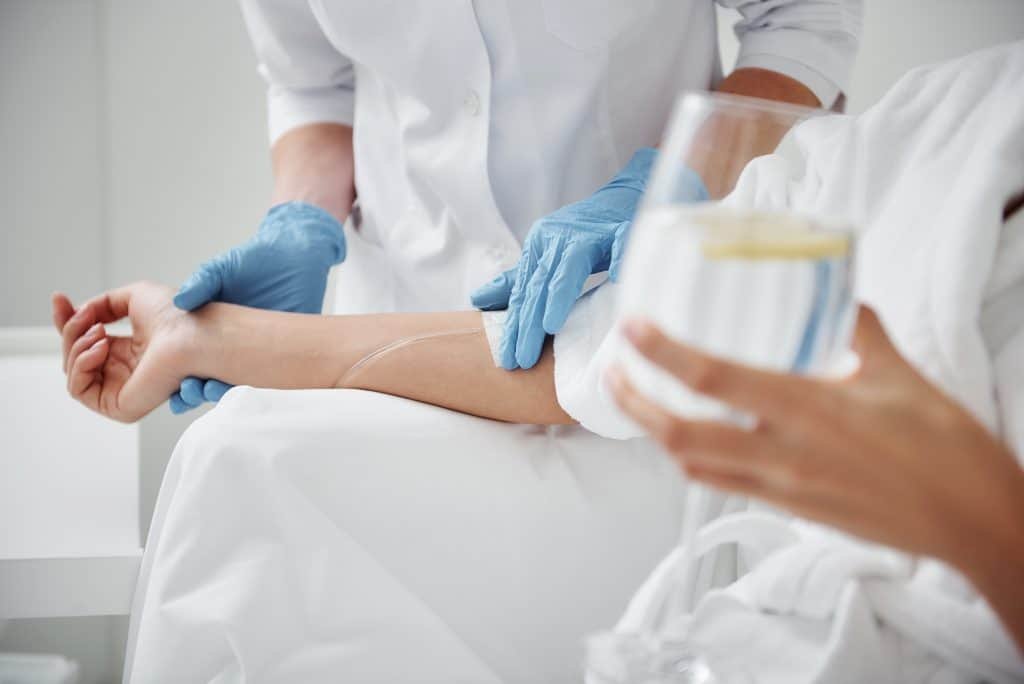In the rapidly evolving field of aesthetic medicine, new treatments continually emerge to address skin aging, damage, and overall skin health. Two popular options gaining attention are Salmon DNA Treatment and Platelet-Rich Plasma (PRP) Therapy. Both methods harness the body’s natural healing processes to promote skin regeneration, but they differ significantly in their composition, application, and expected outcomes. This blog aims to provide a comprehensive overview of Salmon DNA Treatment in Abu Dhabi, comparing it with PRP therapy to help individuals make informed decisions about their skin rejuvenation options.
What is Salmon DNA Treatment?
The Concept Behind Salmon DNA Treatment
Salmon DNA Treatment is a cutting-edge skincare procedure that utilizes DNA fragments derived from salmon to stimulate skin repair and renewal. The treatment involves applying a specialized serum enriched with salmon DNA to the skin, often after a cleansing or superficial treatment. The unique properties of salmon DNA, which is rich in nucleotides and amino acids, help enhance the skin’s natural regenerative capacity, promoting a more youthful and vibrant appearance.
How Salmon DNA Works on the Skin
The application of salmon DNA is believed to encourage cellular repair by supplying essential building blocks for skin regeneration. It can improve hydration, elasticity, and overall skin tone, making it suitable for addressing signs of aging such as fine lines, wrinkles, and dullness. The treatment acts as a bio-stimulator, encouraging the production of collagen and elastin, vital proteins for maintaining skin firmness and elasticity.
What is PRP Therapy?
The Basics of Platelet-Rich Plasma Therapy
PRP Therapy involves extracting a small amount of the patient’s blood, which is then processed to concentrate platelets, growth factors, and other beneficial proteins. This platelet-rich plasma is injected into targeted areas of the skin, stimulating tissue repair and regeneration. PRP has been widely used in aesthetic medicine to treat skin aging, scars, and hair loss due to its ability to harness the body’s own healing mechanisms.
The Mechanism of Action in PRP
Once injected, the growth factors within the PRP promote cellular proliferation, collagen synthesis, and angiogenesis, resulting in improved skin texture, elasticity, and overall rejuvenation. The natural origin of PRP makes it a popular choice for individuals seeking minimally invasive treatments with a low risk of adverse reactions.
Key Differences Between Salmon DNA Treatment and PRP Therapy
Composition and Source
The fundamental difference lies in their composition: Salmon DNA Treatment uses nucleic acids derived from salmon, which are applied topically, whereas PRP involves injecting platelet-rich plasma obtained from the patient’s own blood. This distinction influences the mechanisms by which each treatment stimulates skin regeneration.
Method of Application
Salmon DNA Treatment is typically a non-invasive, topical procedure that can be performed quickly and with minimal discomfort. In contrast, PRP requires blood withdrawal, processing, and injections, which may involve some discomfort and a longer procedure time.
Targeted Outcomes and Benefits
While both treatments aim to improve skin quality, Salmon DNA Treatment is often favored for its hydration-boosting and anti-aging properties, focusing on superficial skin rejuvenation. PRP, on the other hand, can target deeper tissue regeneration, making it effective for scar reduction, hair restoration, and more pronounced skin tightening.
Suitability and Skin Compatibility
Salmon DNA is considered highly biocompatible and suitable for a wide range of skin types, especially for those seeking a gentle rejuvenation. PRP, being autologous (from the patient’s own blood), minimizes the risk of allergic reactions and is versatile for various skin concerns.
Benefits of Salmon DNA Treatment in Skin Rejuvenation
Enhancing Skin Hydration and Elasticity
Salmon DNA’s nourishing properties help improve skin hydration levels, resulting in a plump, supple complexion. It also supports the skin’s natural elasticity, reducing the appearance of fine lines and wrinkles.
Promoting Collagen and Elastin Production
By stimulating the body’s collagen and elastin synthesis, Salmon DNA Treatment can provide a more youthful skin texture and firmness over time, addressing common signs of aging.
Improving Skin Tone and Texture
The treatment can help even out skin tone, diminish dullness, and refine skin texture, contributing to a healthier, more radiant appearance.
Non-Invasive and Gentle Procedure
Being a topical treatment with minimal downtime, Salmon DNA Therapy is suitable for individuals seeking effective results without significant disruption to their daily routines.
Advantages of PRP Therapy for Skin Rejuvenation
Stimulating Deep Tissue Regeneration
PRP injections target deeper layers of the skin, promoting robust tissue regeneration, which can lead to more noticeable improvements in skin firmness and scar reduction.
Natural and Autologous Approach
Since PRP uses the patient’s own blood components, it minimizes the risk of allergic reactions or sensitivities, making it a safe option for many individuals.
Versatility in Treating Various Skin Concerns
PRP is effective for a wide range of indications, including facial rejuvenation, acne scars, and hair loss, thanks to its potent regenerative properties.
Long-Lasting Results
With proper sessions and maintenance, PRP therapy can deliver durable improvements in skin quality and overall appearance.
Comparing Efficacy and Suitability
While both treatments offer valuable benefits, their suitability depends on individual skin concerns, preferences, and goals. Salmon DNA Treatment is ideal for those seeking a gentle, non-invasive approach to improve hydration and fine lines, whereas PRP may be preferred for more profound skin regeneration and addressing deeper scars or hair loss.
The Future of Skin Rejuvenation: Combining Treatments
Emerging trends suggest that combining Salmon DNA Therapy with other regenerative procedures, including PRP, can enhance overall outcomes. Such integrative approaches leverage the strengths of each method, providing comprehensive skin renewal solutions tailored to individual needs.
FAQs about Salmon DNA Treatment and PRP Therapy
1. How long do the results of Salmon DNA Treatment last?
Results typically become visible within a few days to weeks after treatment and can last several months. Maintenance sessions may be recommended to sustain optimal skin health.
2. Is Salmon DNA Treatment suitable for sensitive skin?
Yes, given its biocompatibility and gentle application, Salmon DNA Therapy is generally suitable for sensitive skin types, providing rejuvenation without irritation.
3. Can PRP Therapy be combined with other treatments?
Absolutely. PRP is often combined with laser treatments, microneedling, or other regenerative procedures to amplify results and target multiple skin concerns simultaneously.
4. How frequently should one undergo Salmon DNA Treatment for optimal results?
Typically, a series of sessions spaced a few weeks apart is advised to achieve and maintain desirable outcomes. Your specialist can recommend a tailored treatment plan based on your skin condition.
Conclusion
In summary, Salmon DNA Treatment Abu Dhabi offers a promising, non-invasive approach to skin rejuvenation by harnessing the regenerative properties of salmon DNA. When compared to PRP therapy, it provides a gentler, topical alternative suited for hydration and superficial anti-aging effects. Both treatments have unique advantages, and choosing the most appropriate option depends on individual skin goals and preferences. Consulting with a qualified skincare professional can help determine the best personalized strategy to achieve radiant, youthful skin through these innovative regenerative therapies.















Leave a Reply